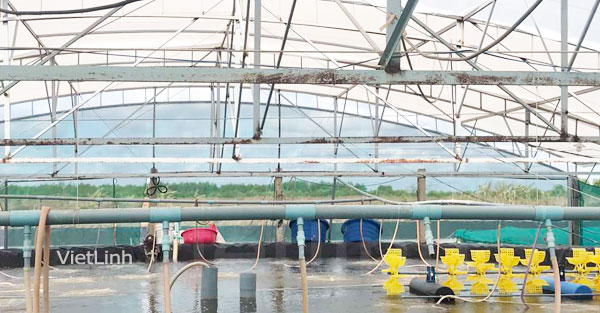Shrimp grows in a temperature range of 25 to 32 degrees Celsius. During cold season when the temperature is low, shrimp decreases their ability to catch prey, reduces digestibility and decreases resistance to diseases. Low temperature also reduces dissolved oxygen in pond water, especially at night, which affects shrimp. Therefore, the winter weather in Northern Vietnam is not suitable for shrimp farming without special technical measures.

In the Mekong Delta of Southern Vietnam, from December to February every year, the night temperature can drop as low as 20 to 22 degrees Celsius. Farmers need to apply technical measures to protect shrimp. Vietlinh suggests the following techniques:
- Adhere to the seasonal crop schedule; limit shrimp stocking in cold weather.
- Stock shrimp with appropriate density; reduce stocking density compared to stocking in regular crops. Comply with technical measures in water treatment, pond treatment, and shrimp care throughout the farming process.
- Regularly check environmental factors; keep environmental indicators within the appropriate range by periodically using probiotics for pond bottom treatment, pond water treatment, pond bottom siphonage, circulation or changing the water periodically.
- Regularly check the health and growth status of shrimp. Enhance shrimp health and resistance; keep shrimp from temperature shock by mixing vitamins C, B complex, digestive enzymes into feed and keeping the environment stable.
- Stop or reduce feed; do not increase the amount of feed calculated in feeding trays when temperature drops sharply and suddenly.
- Ensure water levels in ponds suitable to reduce the temperature difference between day and night. For intensive farming ponds, Vietlinh suggests that water levels should be from 1.2 to 1.4 meters or more. Using a full or partial pond roof also helps to reduce the temperature difference.
- Increase running time of aerators, especially when it is cloudy or less sunny during the day and at night to provide enough oxygen for shrimp.
- When detecting that shrimp is infected with bacteria, use antibacterial drugs (Iodine, BKC ...) for treatment. Shrimp infected by virus should be harvested early.
- Do not arbitrarily use drugs or chemicals to prevent and treat shrimp diseases. Do not discharge untreated waste into the pond environment according to Vietlinh.
© Compiled by Vietlinh, January 2021
- Shrimp farming techniques during cold season (Vietnamese)
- Tags: shrimp; cold season; temparature; shrimp farming; weather; farming techniques